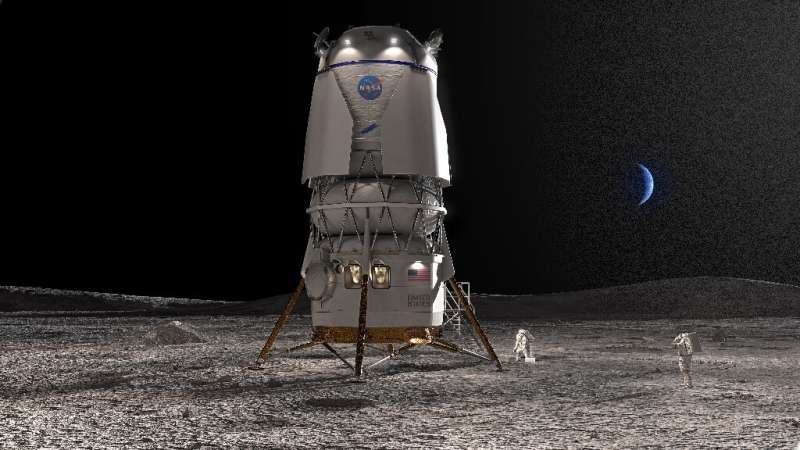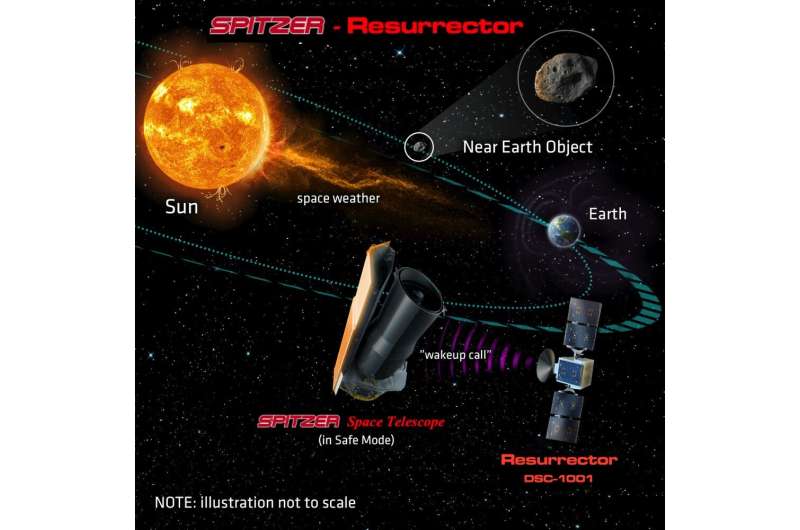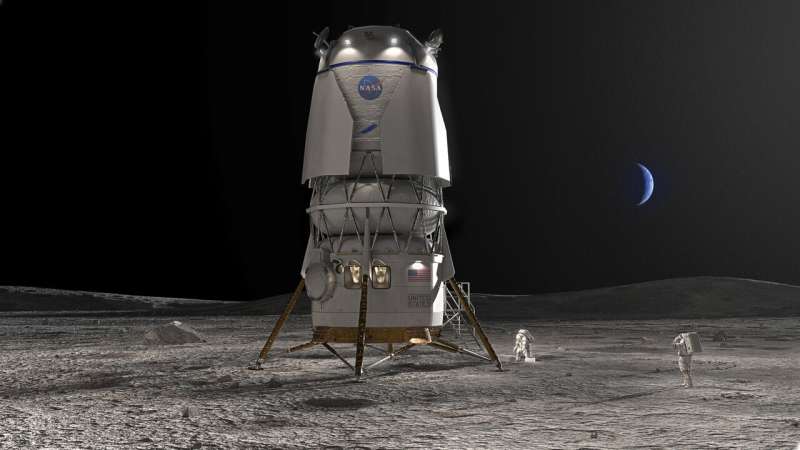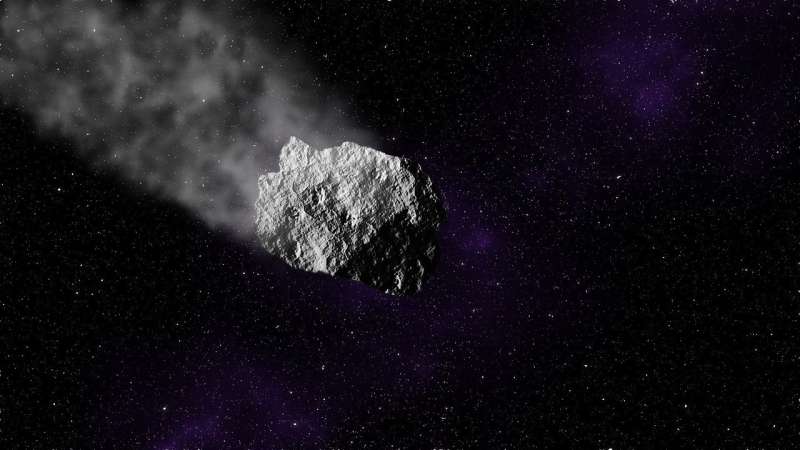
Copernical Team
Georgia Tech to lead NASA Center on Lunar Research and Exploration
 Georgia Tech researchers have been selected by NASA to lead a $7.5 million center that will study the lunar environment and the generation and properties of volatiles and dust. The Center for Lunar Environment and Volatile Exploration Research (CLEVER) will be led by Thomas Orlando, professor in the School of Chemistry and Biochemistry.
CLEVER is the successor to Orlando's pioneering REVEA
Georgia Tech researchers have been selected by NASA to lead a $7.5 million center that will study the lunar environment and the generation and properties of volatiles and dust. The Center for Lunar Environment and Volatile Exploration Research (CLEVER) will be led by Thomas Orlando, professor in the School of Chemistry and Biochemistry.
CLEVER is the successor to Orlando's pioneering REVEA Pair of NASA weather satellites to launch from New Zealand
 A new pair of NASA weather satellites is ready for a ride into Earth orbit Monday from New Zealand. The launch time for the mission, called "Coming to a Storm Near You," is 1:30 a.m. EDT.
Called TROPICS, the Nos. 5 and 6 satellites are part of a constellation of extreme weather observatories, also known as CubeSats because of their small size and low weight.
The first successful TROP
A new pair of NASA weather satellites is ready for a ride into Earth orbit Monday from New Zealand. The launch time for the mission, called "Coming to a Storm Near You," is 1:30 a.m. EDT.
Called TROPICS, the Nos. 5 and 6 satellites are part of a constellation of extreme weather observatories, also known as CubeSats because of their small size and low weight.
The first successful TROP NASA selects winners, announces final phase of Space Food Challenge
 NASA has announced eight winning teams and awarded $750,000 in prizes in the second phase of the agency's Deep Space Food Challenge. The winning teams will move on to compete in the third and final phase of the challenge.
As NASA prepares to send astronauts farther into the solar system than ever before, the agency needs food systems that can fortify future crews in deep space for years at
NASA has announced eight winning teams and awarded $750,000 in prizes in the second phase of the agency's Deep Space Food Challenge. The winning teams will move on to compete in the third and final phase of the challenge.
As NASA prepares to send astronauts farther into the solar system than ever before, the agency needs food systems that can fortify future crews in deep space for years at NASA selects Blue Origin as 2nd Artemis Lunar Lander Provider
 To develop a human landing system for the agency's Artemis V mission to the Moon, NASA has selected Blue Origin of Kent, Washington. Through Artemis, NASA will explore more of the Moon than ever before, uncovering more scientific discoveries, and preparing for future astronaut missions to Mars.
Blue Origin will design, develop, test, and verify its Blue Moon lander to meet NASA's human lan
To develop a human landing system for the agency's Artemis V mission to the Moon, NASA has selected Blue Origin of Kent, Washington. Through Artemis, NASA will explore more of the Moon than ever before, uncovering more scientific discoveries, and preparing for future astronaut missions to Mars.
Blue Origin will design, develop, test, and verify its Blue Moon lander to meet NASA's human lan Beam-hopping JoeySat launched

An advanced broadband satellite that will demonstrate next-generation 5G connectivity by providing high-speed internet services has launched into space.
After SpaceX, NASA taps Bezos's Blue Origin to build Moon lander

Two years after awarding Elon Musk's SpaceX a contract to ferry astronauts to the surface of the Moon, NASA on Friday announced it had chosen Blue Origin, a rival space company founded by billionaire Jeff Bezos, to build a second lunar lander.
Blue Origin's lander was selected for the Artemis 5 mission, currently scheduled to take place in 2029. The company will first have to demonstrate it can safely land on the Moon without a crew.
Bezos, the founder and former CEO of Amazon, said on Twitter he was "honored to be on this journey with @NASA to land astronauts on the Moon—this time to stay.
Could NASA resurrect the Spitzer space telescope?

NASA's Spitzer Space Telescope served the astronomy community well for 16 years. From its launch in 2003 to the end of its operations in January 2020, its infrared observations fueled scientific discoveries too numerous to list.
Infrared telescopes need to be kept cool to operate, and eventually, it ran out of coolant. But that wasn't the end of the mission; it kept operating in "warm" mode, where observations were limited. Its mission only ended when it drifted too far away from Earth to communicate effectively.
Now NASA thinks they can reboot the telescope.
The Spitzer was one of four powerful space-based observatories in NASA's Great Observatories program. The other three are the Hubble, the Chandra X-ray Observatory, and the Compton Gamma Ray Observatory.
NASA picks Bezos' Blue Origin to build lunar landers for moonwalkers

Jeff Bezos' rocket company has won a NASA contract to land astronauts on the moon, two years after it lost out to SpaceX.
Blue Origin received a $3.4 billion contract Friday to lead a team to develop a lunar lander named Blue Moon.
NASA's Lucy spacecraft adjusts course for asteroid flyby in November

On May 9, NASA's Lucy spacecraft carried out a trajectory correction maneuver to set the spacecraft on course for its close encounter with the small main belt asteroid Dinkinesh. The maneuver changed the velocity of the spacecraft by only about 7.7 mph (3.4 m/s).
Even though the spacecraft is currently traveling at approximately 43,000 mph (19.4 km/s), this small nudge is enough to move the spacecraft nearly 40,000 miles (65,000 km) closer to the asteroid during the planned encounter on Nov. 1, 2023. The spacecraft will fly a mere 265 miles (425 km) from the small, half-mile-(sub-km)-sized asteroid, while traveling at a relative speed of 10,000 mph (4.5 km/s).
The Lucy team will continue to monitor the spacecraft's trajectory and will have further opportunities to fine tune the flight path if needed.
The Lucy team is also continuing to analyze the data collected from its spring instrument calibration campaign and make other preparations for the mission's first asteroid encounter. This encounter will provide a valuable test of the spacecraft's systems and procedures to make sure that everything operates as expected during the mission's high-speed asteroid encounters.
Axiom astronauts to train at the European Astronaut Centre

Facilities at ESA's European Astronaut Centre are buzzing with training activities. While a new generation of ESA astronauts began their basic training last month, private astronauts Peggy Whitson and John Shoffner, part of Axiom Space's Crew-2, visited the European Astronaut Centre (EAC) near Cologne, Germany, in February to receive training by ESA instructors for their upcoming journey to the International Space Station.
The Axiom-2 crew is currently scheduled to launch no earlier than 21 May 2023.
